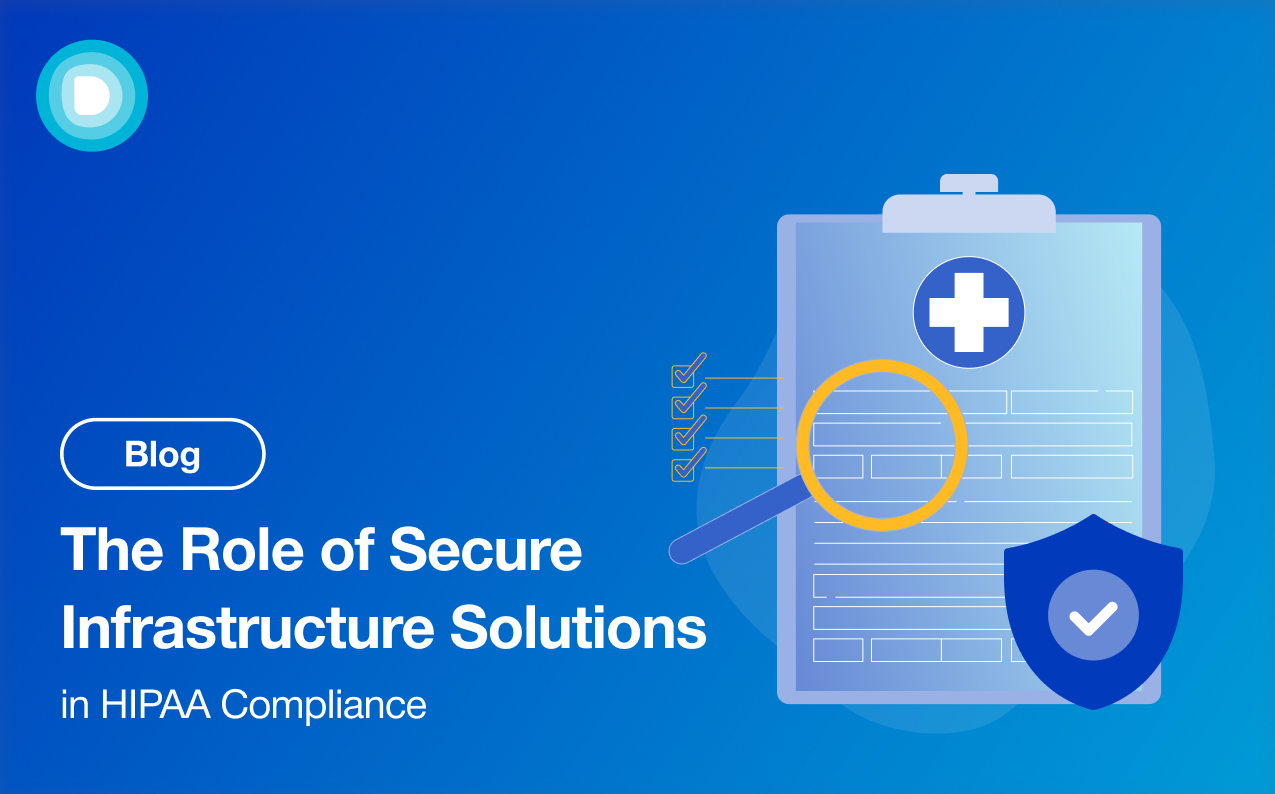- Product
-
Solution
-
By Industry
Cybersecurity solutions tailored to your industry’s needs.
-
- Resources
-
Books
Our ultimate guides and playbooks
Solution Briefs
Overview of PureDome’s functionality
-
Quizzes
Assess your cybersecurity readiness
Case Studies
PureDome customer success stories
Newsletter
Subscribe to the PureDome newsletter
-
- About Us
- Partner
- Pricing
- Download
The Role of Secure Infrastructure Solutions in HIPAA Compliance
-
Aiman Ikram
-
15 Apr 2025
- 3 min read

Ever heard of the 2023 HCA Healthcare data breach? It exposed 11 million patient records—names, addresses, appointment details, even insurance information. Now imagine that happening at your healthcare organization. Fines, lawsuits, and trust gone overnight.
And here’s the thing—most healthcare breaches don’t happen because of a sophisticated cyberattack. They happen because of weak infrastructure. Unsecured remote access. Poor network segmentation. The kind of vulnerabilities that compliance frameworks like HIPAA are supposed to guard against—but only if the right security measures are in place.
That’s where secure infrastructure solutions come in. But before we dive into how they help with HIPAA compliance, let’s break down what they actually are.
What Are Secure Infrastructure Solutions?
HIPAA is clear on one thing—healthcare organizations need to safeguard patient data at all times. That means encrypting it, controlling access, and ensuring that remote connections are just as secure as in-office networks.
Secure infrastructure solutions are the foundation for making that happen. They create a controlled, protected environment where only authorized users can access sensitive health information (PHI) without exposing it to external threats.
|
Component |
Function |
|
Network Security |
Firewalls, VPNs, and private gateways keep external threats out. |
|
Access Control |
Only authorized personnel can access sensitive data. |
|
Encryption |
Data is protected in transit and at rest, so even if intercepted, it’s unreadable. |
|
Endpoint Protection |
Devices accessing PHI are secured against malware and unauthorized access. |
|
Logging & Monitoring |
Every action is recorded, helping to detect suspicious activity before a breach happens. |
It sounds technical, but at its core, it’s about making sure the right people have the right access—securely.
The Biggest HIPAA Compliance Challenges (and Where Security Fails)
Even with good intentions, healthcare organizations struggle with HIPAA compliance. The biggest risks aren’t just hackers—it’s weak internal security measures that leave PHI vulnerable.
- Unsecured Remote Access: Many healthcare professionals access patient data remotely, but without a secure connection, that data is exposed.
- Poor Network Segmentation: If everything is accessible from everywhere, a breach in one department can spread fast.
- Weak Access Controls: Too many people have access to sensitive data, and over-permissioning leads to accidental leaks.
- Lack of Real-Time Monitoring: If no one is tracking who accesses what, unauthorized access can go undetected for months.
- Third-Party Risks: Vendors and contractors often need access to systems, but without strict controls, they become a major weak point.
Most breaches happen because of these gaps—not because of some genius hacker breaking through firewalls. It’s the lack of basic security hygiene.
How Secure Infrastructure Solutions Strengthen HIPAA Compliance
So how do secure infrastructure solutions actually help with HIPAA compliance? By closing the gaps mentioned above and reinforcing security at every level.
- Encrypted Remote Access: Secure VPNs and private gateways ensure that PHI is never exposed, even on public Wi-Fi.
- Role-Based Access Controls: Only approved users can access specific records, minimizing the risk of over-permissioning.
- Zero Trust Security: No one is trusted by default—every login, every device, and every access request is verified.
- Automated Monitoring & Logging: If someone tries to access data they shouldn’t, it’s flagged immediately.
- Network Segmentation: Keeps different departments separate, preventing one compromised system from taking down the entire network.
When properly implemented, these solutions make HIPAA compliance easier, not harder.
.png?width=620&height=356&name=Blog%20Body%20Banner%20-%20%20ZTS%20(2).png)
Take a look at our HIPAA Compliance checklist here.
You can also read up more on ZTNA Implementation.
The Cost of Non-Compliance Is Too High
HIPAA fines aren’t small. The average penalty for a healthcare data breach is $1.1 million, and that’s not including the cost of lawsuits, reputation damage, or patient churn. Some hospitals have been forced to shut down after a major breach.
Beyond the fines, losing patient trust is devastating. Once data is compromised, patients don’t feel safe—and they take their business elsewhere. A strong security infrastructure isn’t just about compliance. It’s about protecting your organization’s future.
.png?width=620&height=356&name=Blog%20Body%20Banner%20-%20The%20average%20penalty%20for%20a%20healthcare%20data%20(1).png)
Where PureDome Fits In
Most healthcare organizations don’t need a full-scale, complex security overhaul. They just need to fix the gaps that leave them vulnerable—and do it in a way that doesn’t slow down operations.
That’s where PureDome comes in.
- Secure Remote Access: End-to-end encrypted VPNs and private gateways keep patient data safe, even on remote connections.
- Granular Access Controls: Set role-based permissions so only the right people see the right data.
- Network-Level Security: Protect all endpoints and prevent lateral movement across your systems.
- Real-Time Monitoring: Get full visibility into who is accessing what, reducing unauthorized risks.
It’s not about adding complexity—it’s about simplifying security so you can focus on what matters: patient care.
Final Thoughts
HIPAA compliance isn’t just about avoiding fines. It’s about building a security-first culture that keeps patient data safe—whether it’s accessed from a hospital room, a clinic, or a doctor’s home office.
Secure infrastructure solutions aren’t a luxury. They’re a necessity. And if you’re looking for a simplified, effective way to secure remote access and protect PHI, PureDome is built for that. More than 3000 users are benefiting from PureDome when it comes to network security. Learn more about how you can protect your data.